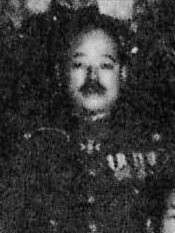Takuma Nishimura
Takuma Nishimura (西村 琢磨, Nishimura Takuma, 12 September 1889 – 11 June 1951) was a Japanese army general in the Imperial Japanese Army during World War II. After the Japanese surrender, he was tried by Britain and later Australia for war crimes. He was executed in the then Australian territory of Papua and New Guinea. Nishimura was a native of Fukuoka prefecture.
Takuma Nishimura | |
|---|---|
 General Takuma Nishimura | |
| Native name | 西村 琢磨 |
| Born | 12 September 1889 Fukuoka, Japan |
| Died | 11 June 1951 (aged 61) Manus Island, Territory of Papua and New Guinea |
| Allegiance | |
| Service/ | |
| Years of service | 1910–1942 |
| Rank | Lieutenant General |
| Commands held | Indochina Expeditionary Army, Imperial Guard Division |
| Battles/wars | World War II |
| Other work |
|
Early military career
Nishimura was a graduate of the 22nd class of the Imperial Japanese Army Academy in 1910, and subsequently attended Army Engineering School. He graduated from the 32nd class of the Army Staff College in 1920. He served most of his career in various staff and administrative posts within the Imperial Japanese Army General Staff.
Nishimura served as presiding judge at the court-martial of army officers responsible for the assassination of Prime Minister Inukai Tsuyoshi in 1932. The defendants all received light sentences. For this he was apparently rewarded later with command of the Imperial Guards Division, a prestigious post.
From 1936–1938, Nishimura was commander of the 9th Infantry Regiment, and from 1938–1939 commanded the 1st Heavy Field Artillery Brigade. He became Chief of Staff of the Eastern Defense Army from 1939–1940.[1] Promoted to Major General in 1940, Nishimura was commander of the Indochina Expeditionary Army in the invasion of French Indochina in 1940. Nishimura was promoted to Lieutenant General in 1941.
World War II
During 1941, Nishimura commanded the 21st Independent Mixed Brigade, and then the Imperial Guard Division during the Malayan campaign. During the Battle of Muar, the Imperial Guards killed 155 Australian and Indian prisoners of war in an event known as the Parit Sulong Massacre.
Following the surrender of Allied forces in Singapore, Nishimura was in charge of the eastern half of Singapore Island, during the period in which the Sook Ching massacre took place. Nishimura himself was often at odds with the commander of the 25th Army, General Tomoyuki Yamashita, at times engaging in conduct that seemed deliberately insulting.[2] As a result, his division was denied the Emperor's Victory Citation, and he was recalled to Japan and forced to retire in April 1942.
From June 1943 – February 1944, Nishimura was appointed governor of the Shan States in northern Burma. From February 1944, Nishimura was appointed Japanese military Governor of Sumatra, a post he held until the end of the war.
Trials for war crimes
After the end of the war, Nishimura was tried by a British military tribunal in Singapore for the events related to the Sook Ching massacre. He was found guilty of war crimes, and was sentenced to life imprisonment, of which he served four years in Singapore before being sent back to Tokyo to complete his sentence.
As he was being repatriated to Japan, Nishimura was forcibly removed from a ship at Hong Kong by Australian military police and brought before an Australian military tribunal on Manus Island, where he was charged with events in connection to the Parit Sulong Massacre. Evidence was presented stating that Nishimura had ordered the shootings at Parit Sulong and the destruction of bodies. Nishimura was found guilty and was executed by hanging on 11 June 1951.
In 1996, Australian journalist Ian Ward suggested that the Australian Army prosecutor, Captain James Godwin—a former Royal New Zealand Navy pilot who had been ill-treated as a POW in Sumatra—had "manipulated" evidence to implicate Nishimura. Ward's impressions were prompted by fabricated evidence from a U.S. lobbyist seeking compensation for Japanese POWs.[3][4] Ward also claimed that Godwin took no action on the testimony of Lieutenant Fujita Seizaburo, who reportedly stated that he was responsible for the Parit Sulong massacre. Fujita was not charged and his fate is unknown.
Notes
- Steen Ammenthorp, The Generals of World War II
- Kent Budge, The Pacific War Online Encyclopedia
- Ian Ward, Snaring the Other Tiger (Media Masters Publishers, Singapore, 1996)
- Watt, Lawrence. "Godwin, James Gowing 1923–1995". Dictionary of New Zealand Biography. Ministry for Culture and Heritage. Retrieved 10 April 2011.
Bibliography
- Fuller, Richard (1992). Shokan: Hirohito's Samurai. London: Arms and Armor. ISBN 1-85409-151-4.
- Ward, Ian (1996). Snaring the Other Tiger. Singapore: Media Masters Publishers.
External links
- Ammenthorp, Steen. "Nishimura, Takuma Lieutenant-General (1899–1951)". The Generals of World War II.
- Budge, Kent. "Nishimura Takuya". Pacific War Online Encyclopedia.